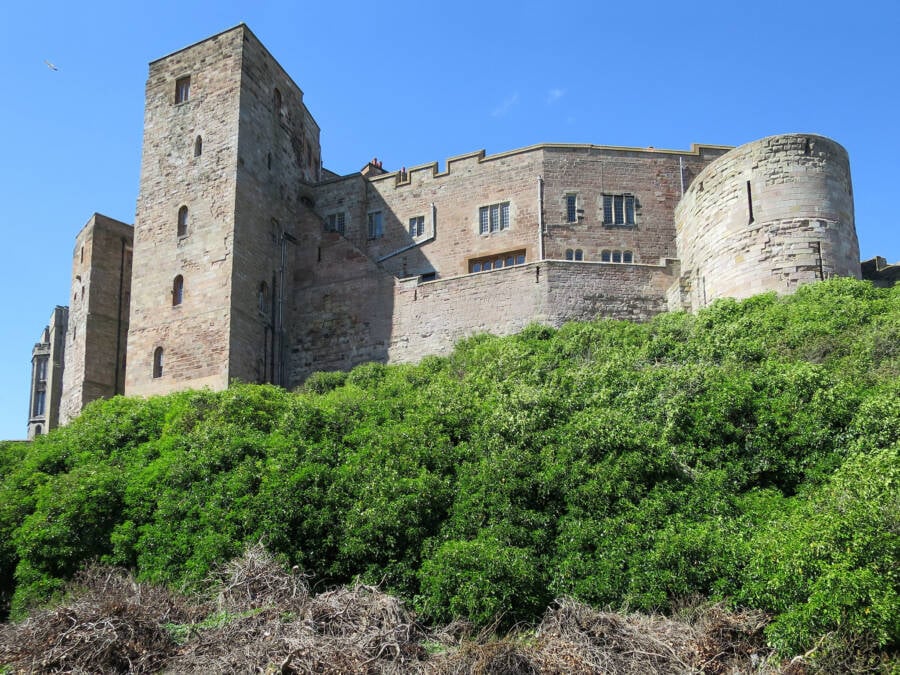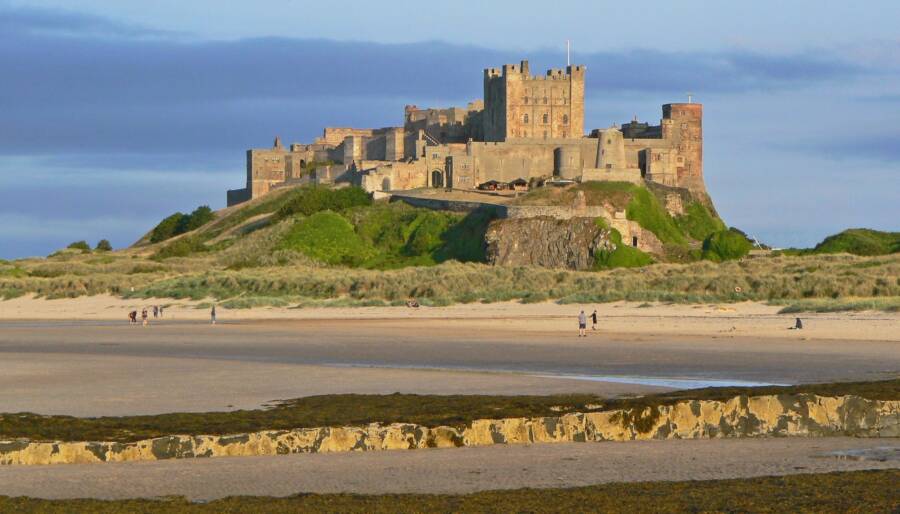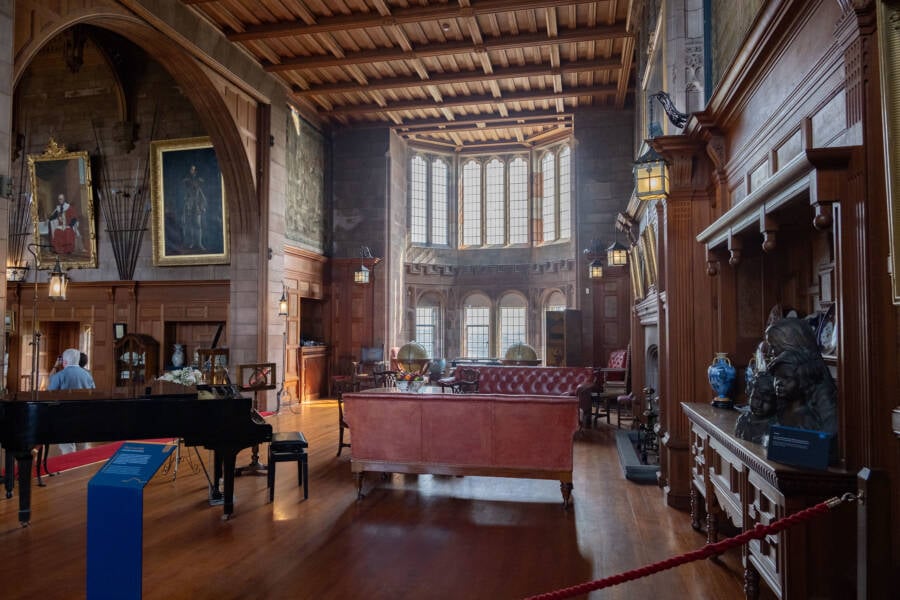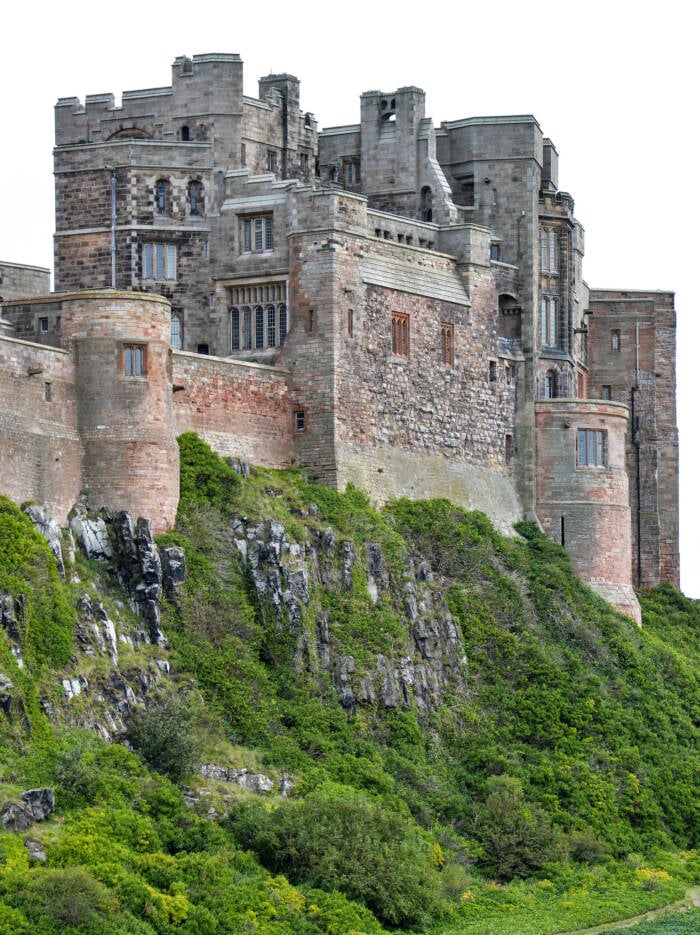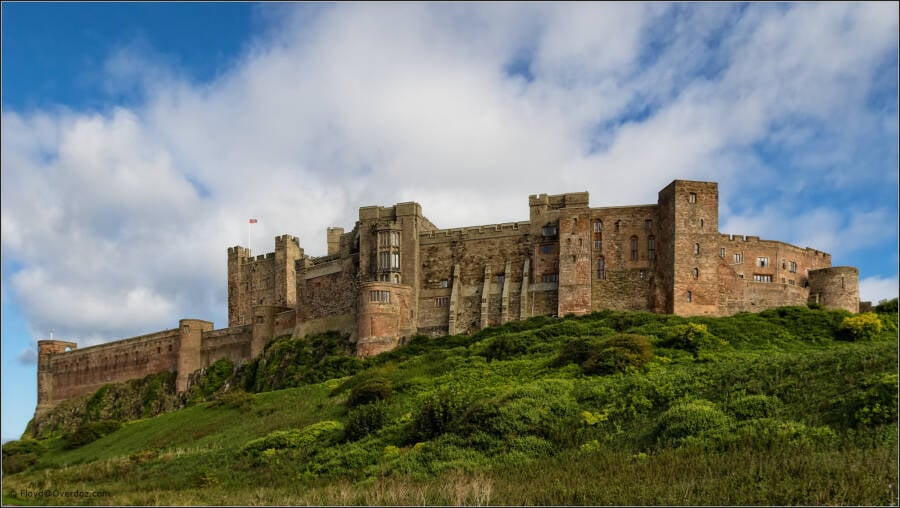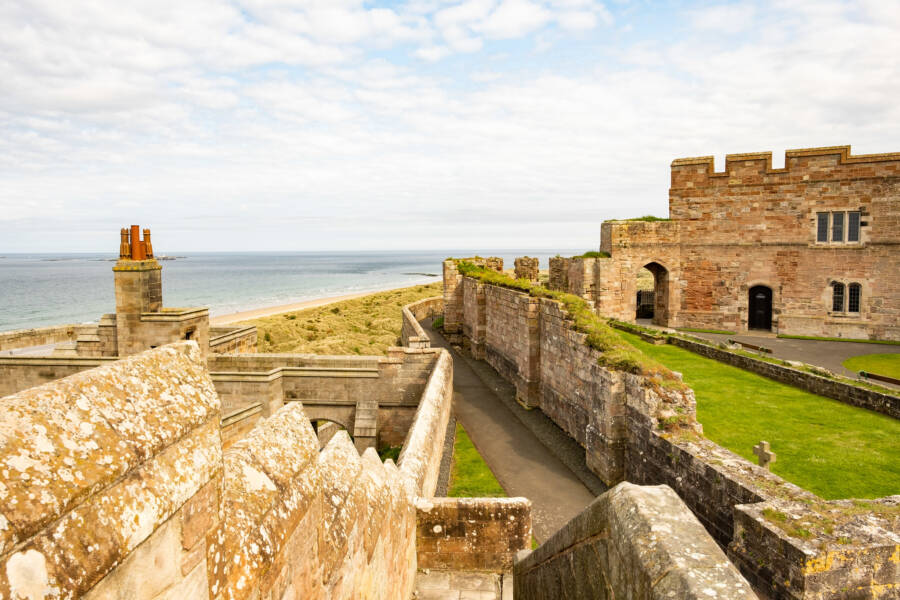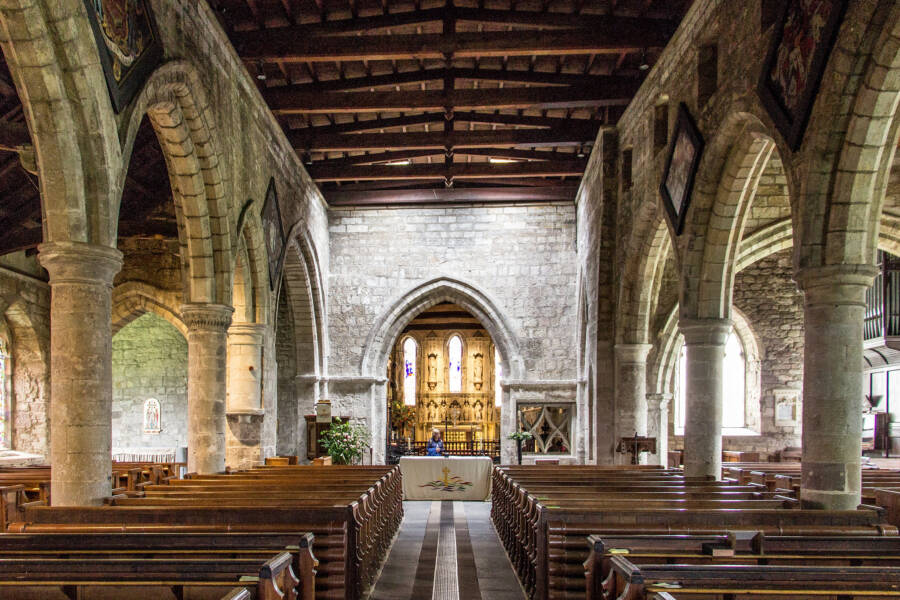Over the past 1,400 years, Bamburgh Castle in Northumberland has seen Viking raids, Norman attacks, and a devastating siege during the Wars of the Roses — but it still towers over the North Sea to this day.
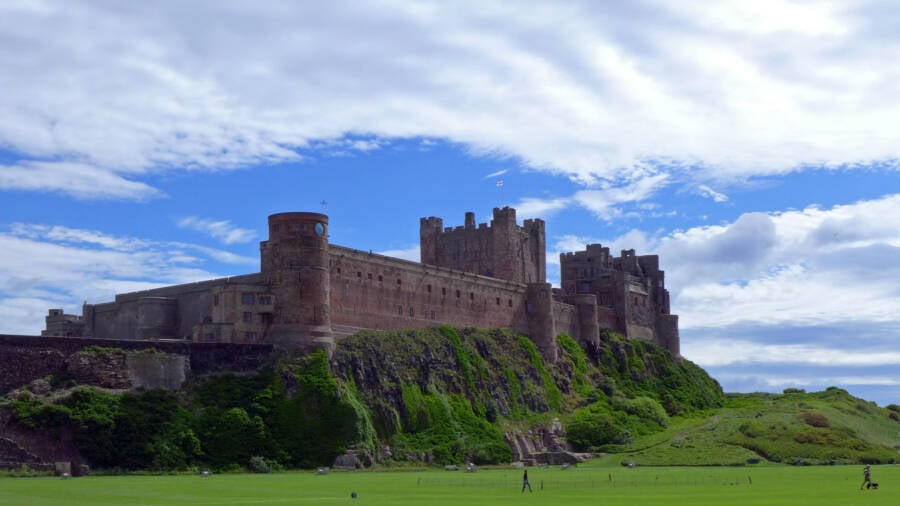
Gordon Milligan/FlickrBamburgh Castle is located in Northumberland on England’s east coast.
Perched on the Northumberland coastline, Bamburgh Castle looks as though it has been plucked straight from the pages of a medieval fantasy. Indeed, it is the fabled site of Joyous Gard, the fortress Sir Lancelot released from an evil enchantment in Le Morte d’Arthur.
A structure of some sort has existed on the hill overlooking the North Sea for more than 1,400 years. What began as a fort for Celtic Britons in the sixth century transformed into a stronghold surrounded by a wooden stockade and later a towering stone fortress. During the Wars of the Roses, it became the first castle in England to fall to cannon fire.
Bamburgh Castle was eventually rebuilt, and for a time, it served as the headquarters for a charity, a school for underprivileged children, and even a hospital. Then, in 1894, an industrialist named William Armstrong purchased the historic structure and renovated it extensively, blending Victorian and medieval elements.
Today, hundreds of thousands of tourists flock to Bamburgh Castle each year. Its 12th-century keep and 14 rooms are open to visitors who want to experience its storied past for themselves.
The Bloody History Of Bamburgh Castle
The foundations of Bamburgh Castle were first laid as early as 420 C.E. by Celtic Britons. The original structure may have served as the capital of the kingdom of Bernicia, an Anglo-Saxon territory encompassing northeastern England and southeastern Scotland.
In 547, the fort was captured by King Ida of Bernicia, who built a wooden stockade and timber stronghold to reinforce it against further attack. As Bamburgh Castle's official website notes, "Drawn by its mighty escarpment towering 150 feet above the North Sea and natural harbor, the sixth-century kings chose Bamburgh as their royal capital, calling it Din Guaydri."

Public DomainKing Ida of Bernicia, the first known king of the Anglian kingdom of Bernicia.
The following 50 years saw the fort change hands several times as Britons fought to take it back and Anglo-Saxons continually recaptured it. By 590, it was under the control of Ida's son, Hussa. His successor, King Æthelfrith, later passed it to his wife, Bebba, and it became known as Bebbanburg.
In 993, a Viking raid destroyed the fortress, but the Normans rebuilt it in the 11th century as they took over England. Parts of this structure form the core of Bamburgh Castle as it currently stands.
By 1095, the castle was an important stronghold on the border of England and Scotland. That year, King William II of England laid siege to it and captured its owner, Robert de Mowbray, Earl of Northumbria, after he staged a revolt against the Crown. Bamburgh Castle then passed into the hands of the English monarchy.
Over the following centuries, the fortress served as a key outpost for attacks on Scotland. When King Henry II took the throne in 1154, he had a mighty keep built at the castle, which still stands to this day. Henry's successors, including John and Henry III, used Bamburgh Castle as a palace, introducing comforts like glass windows.
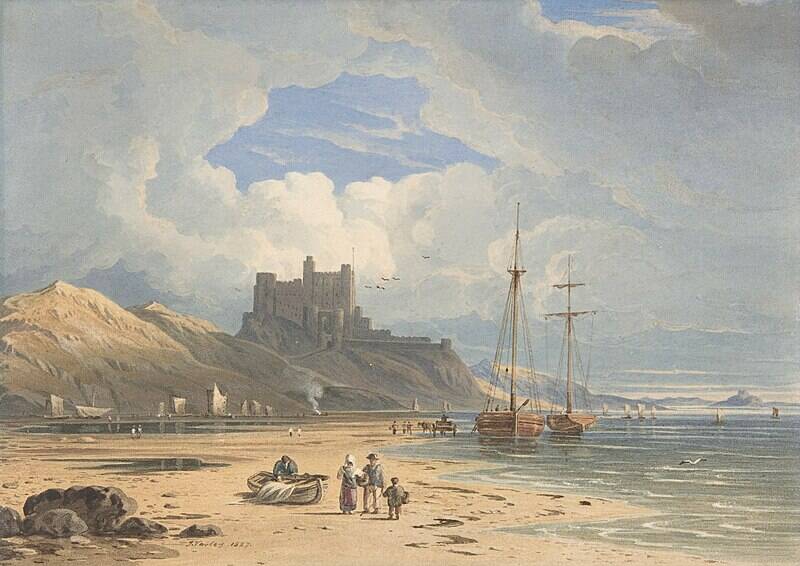
Public DomainAn 1827 painting of Bamburgh Castle.
When the Wars of the Roses broke out in 1455, the fortress was held by the Lancastrians and was home to King Henry IV. In 1464, Yorkist "Kingmaker" Richard Neville, Earl of Warwick, besieged Bamburgh Castle for nine months, and it ultimately became the first castle in England to fall to cannon fire. It was heavily damaged and remained in disrepair for centuries.
During the 18th century, small sections of the structure were restored. Parts of it were used as a pharmacy, a hospital, and a free school for impoverished students.
However, the biggest change to Bamburgh Castle came in the late 19th century when Victorian industrialist William Armstrong purchased the property.
William Armstrong Modernizes The Medieval Castle
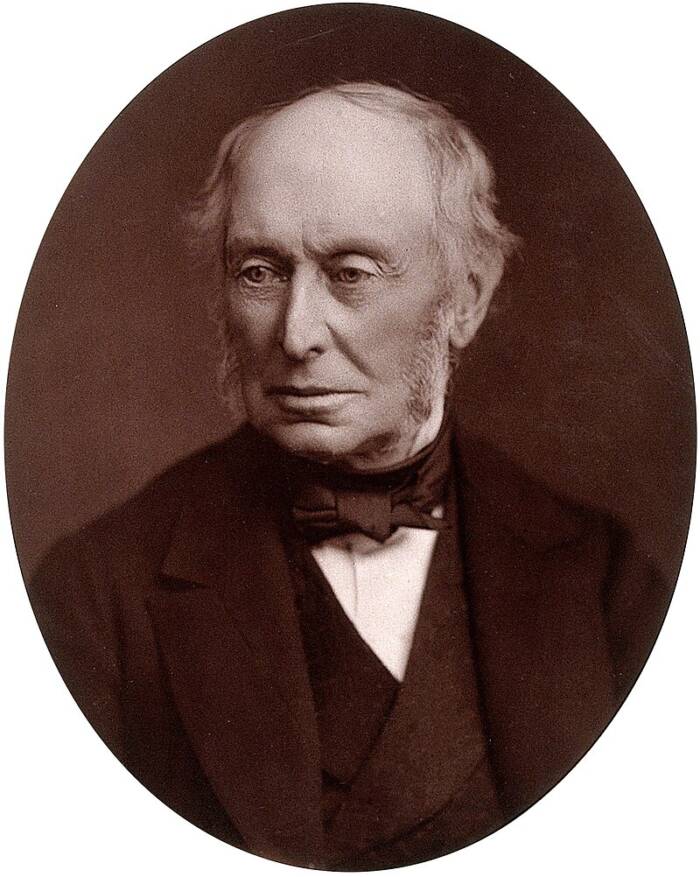
Public DomainWilliam George Armstrong, the industrialist who purchased Bamburgh Castle.
In 1894, William Armstrong bought Bamburgh Castle with the intention of completing renovations started by the board of trustees that had managed it for nearly 200 years. Armstrong made his fortune through his various inventions, such as the hydraulic crane and the Armstrong Gun, and he's remembered today for his contributions to modern artillery.
Under his ownership, Bamburgh Castle's foundations, walls, roof, and towers were rebuilt and strengthened. The interior was redesigned to reflect Victorian styles, such as wood paneling, fireplaces, and large halls. Amenities like running water, heating, and electricity were also added for the family's convenience and comfort. In all, the renovations cost over one million pounds (more than one hundred million pounds or $134,000,000 in today's currency).
After Armstrong's death in 1900, Bamburgh Castle was passed down to his descendants, who managed the property through both world wars. In light of the threat of invasion during World War II, defenses were built on the beach next to the castle.
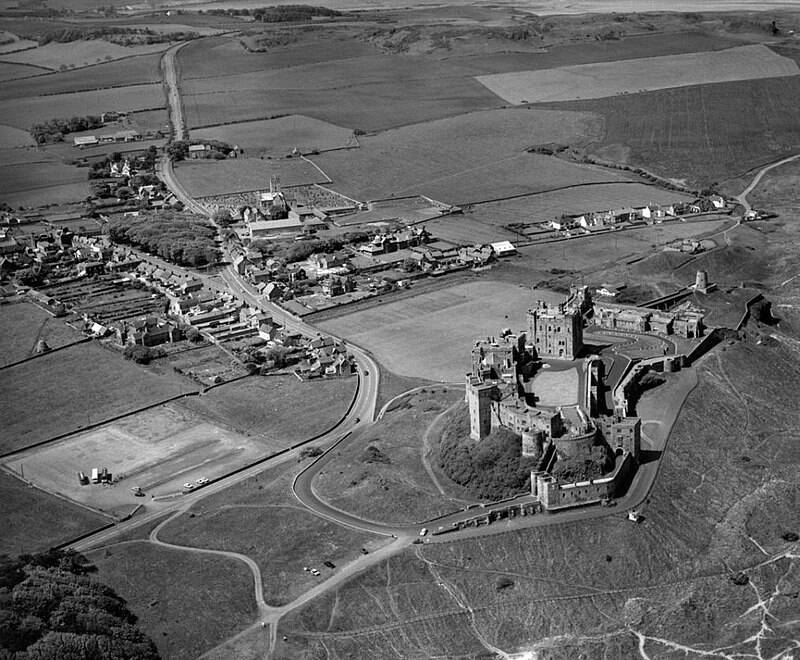
Public DomainThe castle towers over the small village of Bamburgh.
Since the 1960s, archaeologists have excavated areas of the castle and uncovered artifacts dating as far back as the seventh century. Alongside at least 100 burials, researchers have unearthed jewelry, coins, pottery, tools, swords, and other weapons.
The 2015 television series The Last Kingdom follows Uhtred of Bebbanburg, a fictional character based on a real historical figure who may have once ruled at Bamburgh Castle in the early 11th century, though there are no records directly connecting him to the fort. Still, the show's success only added to the castle's popularity.
Today, Bamburgh Castle draws some 200,000 tourists each year. It offers guests the opportunity to explore its grand halls, historical artifacts, and breathtaking views of the Northumberland coastline.
After reading about Bamburgh Castle, go inside the story of Germany's Hohenzollern Castle, the palace in the clouds. Then, read about McDermott's Castle, the eerie Irish fortress that dates back to the 12th century.
